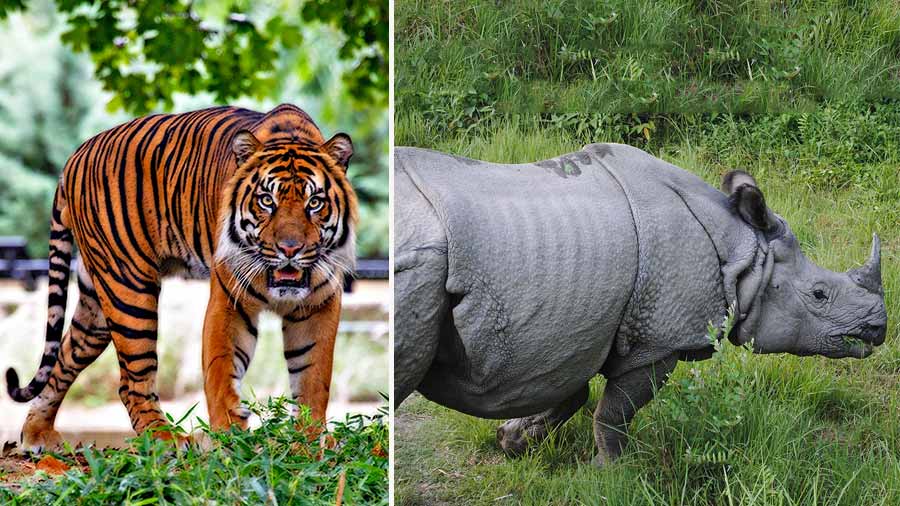More than 1,000 wildlife species in India are facing the threat of extinction, a third of them from West Bengal.
The Living Planet Report 2022, a flagship publication of the WWF that was released last week, has recorded “a devastating 69 per cent drop” in global wildlife population since 1970 and pointed out that the world is in the midst of interlinked double emergencies of climate change and biodiversity loss. The report says “the main drivers of wildlife population decline are habitat degradation and loss, exploitation, the introduction of invasive species, pollution, climate change and disease”.
“About 350 species from West Bengal are in the International Union for Conservation of Nature’s (IUCN’s) Red data list, which includes four of the five flagship animals in the country, including the tiger, elephant, one-horned rhino and the gaur. The first three are endangered while the last one stands vulnerable,” said Biswajit Roy Choudhury, wildlife expert with non-profit NEWS, which is working on protecting endangered and vulnerable species in the state.
Double emergency
Sejal Worah of WWF, India, said about 150 species of amphibians — toads and similar animals — are currently under threat in the country and more than 40 per cent of the honey bees have disappeared in the past 25 years. The expert also said 1,004 species in India are currently in the “extinction crisis segment” in the IUCN’s Red list, which includes 81 critically endangered, 206 endangered, 394 vulnerable and 323 near-threatened ones.
India is ranked seventh globally among countries impacted by climate change in 2021, with its forest cover being the major casualty. “By 2030, almost 45 to 64 per cent of India’s forest will be impacted by climate change,” said a WWF expert.
“We are living through climate and biodiversity crises… the cascading impacts of climate change are already affecting the natural world,” reads the report. “Unless we limit warming to 1.5 degrees Celsius, climate change is likely to become the dominant cause of biodiversity loss in the coming decades.”
“We face the double emergencies of human-induced climate change and biodiversity loss… WWF is extremely worried by this new data showing a devastating fall in wildlife population,” said Marco Lambertini, director-general, WWF International.
Grave impact on fish
The latest report is based on the “mega monitoring” of a sample size of 32,000, with the species count being 5,230; the largest data set ever considered for such an analysis.
The regional decline in wildlife has been highest in Latin America, which has recorded a 94 per cent drop. Africa and Asia Pacific have registered 66 per cent and 55 per cent drops in wildlife population, respectively.
Fish species with 83 per cent loss is the most impacted wildlife group worldwide. Widespread loss of freshwater habitats across the world is one of the causes. “Only 37 per cent of rivers longer than 1,000km remain free flowing… and dams and reservoirs and their up and downstream propagation of fragmentation and flow regulation are the leading contributors to the loss of river connectivity and biodiversity,” states the report.
“The Indian government should wake up to the situation as soon as possible. Currently most of our so-called development policies are at loggerheads with minimising climate change and conserving biodiversity,” commented an independent wildlife expert on the report’s findings.
“The Living Planet Report 2022 shows how climate change and biodiversity losses are not just environmental issues, but economic, development, security and social issues, too, and therefore must be addressed together,” said Ravi Singh, secretary general, WWF, India.
